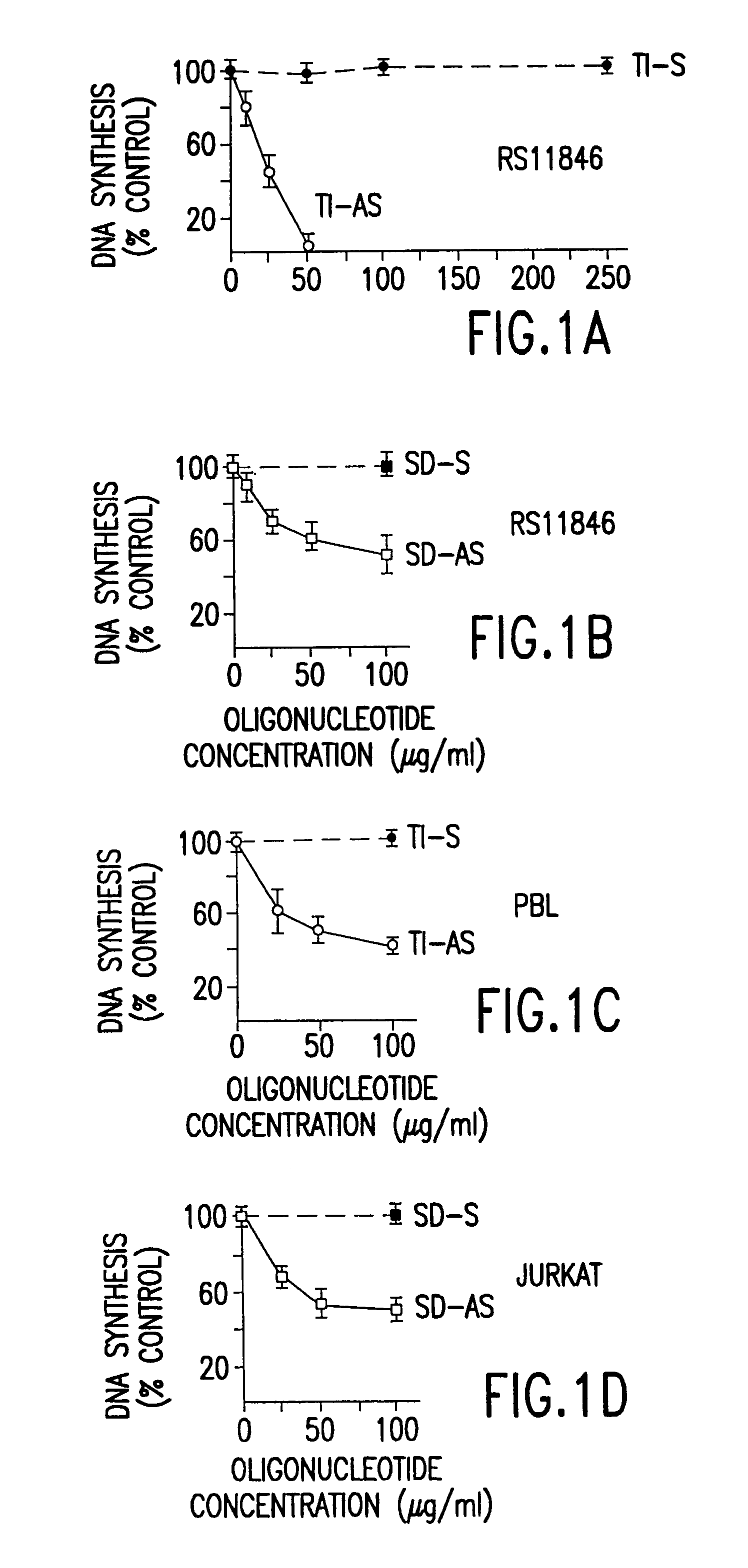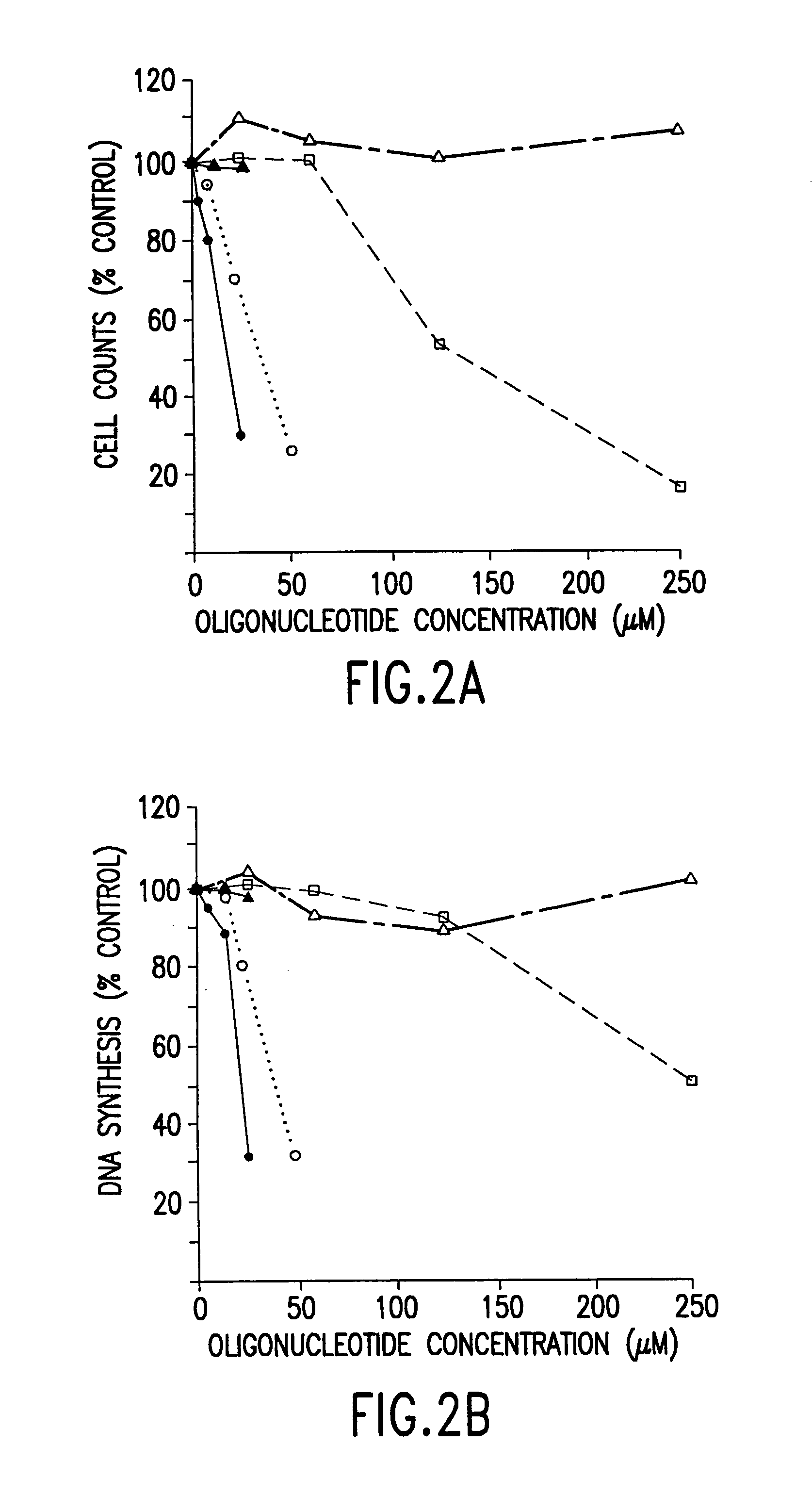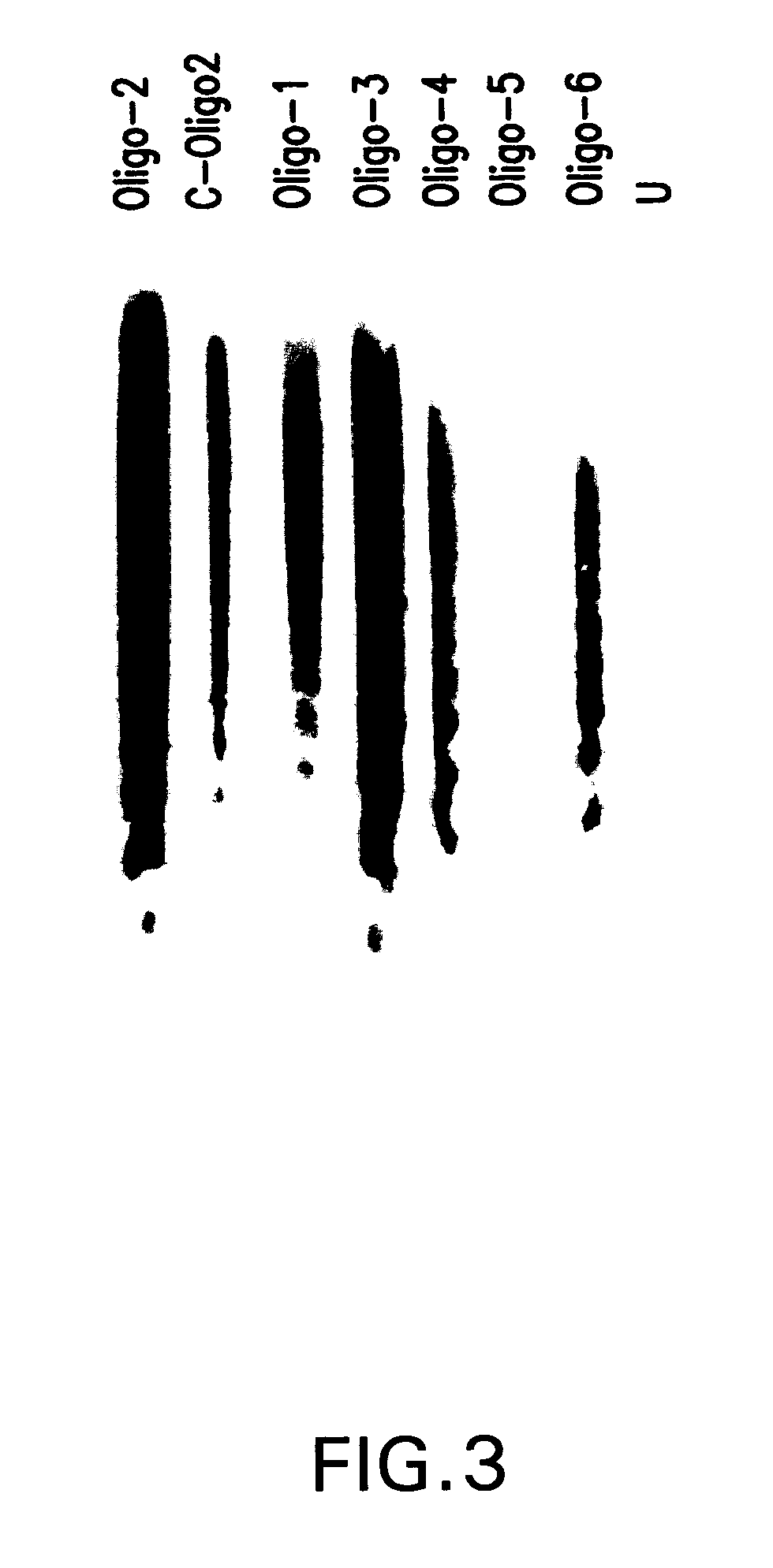Regulation of BCL-2 gene expression
a gene and gene regulation technology, applied in the field of cancer treatment, can solve the problems of lack of specificity of current cancer treatment approaches, serious dose-limiting toxicities of most cancer treatment drugs, etc., and achieve the effects of reducing bcl-2 expression, increasing chemosensitivity of neoplastic cells, and improving sensitivity of lymphoma cells
- Summary
- Abstract
- Description
- Claims
- Application Information
AI Technical Summary
Benefits of technology
Problems solved by technology
Method used
Image
Examples
example 1
Preparation of Anticode Oligomers
[0061]Normal and phosphorothioate oligodeoxynucleotides were synthesized using an Applied Biosystems 380B DNA synthesizer, and purified by HPLC reverse-phase chromatography (PRP-1 column) as described in Stein et al., Nucl. Acids Res., 16:3209–3221 (1988) which is specifically incorporated as if fully set forth herein. In some cases it was necessary to further purify oligodeoxynucleotides by C18-Sep-Pak chromatography (Waters Associates, Millipore, Inc.), as described previously in Kern et al., J. Clin. Invest., 81:237–244 (1988), to eliminate nonspecific cytotoxic activity. Oligodeoxynucleotides eluted in 30% acetonitrile were evaporated to dryness, resuspended at 1–2 mM in sterile Dulbecco's phosphate-buffered saline or Hanks' buffered salt solution (both from Gibco), and stored at −80° C. in small aliquots.
[0062]Table I shows the oligodeoxynucleotide synthesized and their relation to the sense-strand of the human bcl-2 gene. Portions of the sequen...
example 2
Treatment of Serum for In Vitro Investigations of Antisense Normal Oligodeoxynucleotides
[0066]Because normal oligodeoxynucleotides are sensitive to degradation by nucleases present in serum, the efficacy of the TI-AS oligodeoxynucleotide in fetal bovine serum (FBS) heated for 30 minutes at 56° C. (the usual procedure for inactivating serum complement) was contrasted with the efficacy of TI-AS in FBS heated for 1 hour at 68° C., a temperature sufficient for irreversible inactivation of many nucleases. The RS11846 follicular lymphoma cell line was used. RS11846 cells contain a t (14; 18) chromosomal translocation that deregulates bcl-2 expression, resulting in the accumulation of high levels of bcl-2 mRNAs, Tsujimoto et al., Proc. Natl. Acad. Sci. USA, 83:5214–5218 (1986).
[0067]RS11846 follicular lymphoma cells were cultured in medium containing 5% (vol:vol) fetal bovine serum (FBS) that had been heated at 56° C. for 0.5 hours or at 68° C. for 1 hour. TI-AS normal oligodeoxynucleotide...
example 3
Specific Inhibition of Lymphoid Cell Growth by Antisense Normal Oligodeoxynucleotides
[0069]Antisense normal oligodeoxynucleotides directed against the translation initiation site (TI-AS) and the splice donor site (SD-AS) of bcl-2 transcripts were tested for their ability to suppress the proliferation of normal and neoplastic lymphoid cells.
[0070]RS11846 follicular lymphoma cells, JUKRAT T cell leukemia cells, and freshly isolated peripheral blood lymphocytes were cultured in medium containing 10% (vol:vol) FBS that had been heated at 68° C. for one hour. various concentrations of normal oligodeoxynucleotides were added at the initiation of culture, including: TI-AS, TI-S, SD-AS, and SD-S. Relative DNA synthesis was measured in cultures after 2–3 days by [3H]-thymidine incorporation. Data were calculated as a percentage of control cultures containing volumes of PB or HBSS equivalent to oligodeoxynucleotide-treated cultures, and represent the mean (± standard deviation) of duplicate c...
PUM
| Property | Measurement | Unit |
|---|---|---|
| temperature | aaaaa | aaaaa |
| pH | aaaaa | aaaaa |
| v/v | aaaaa | aaaaa |
Abstract
Description
Claims
Application Information
 Login to View More
Login to View More - R&D
- Intellectual Property
- Life Sciences
- Materials
- Tech Scout
- Unparalleled Data Quality
- Higher Quality Content
- 60% Fewer Hallucinations
Browse by: Latest US Patents, China's latest patents, Technical Efficacy Thesaurus, Application Domain, Technology Topic, Popular Technical Reports.
© 2025 PatSnap. All rights reserved.Legal|Privacy policy|Modern Slavery Act Transparency Statement|Sitemap|About US| Contact US: help@patsnap.com



